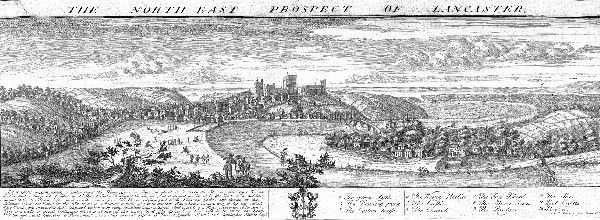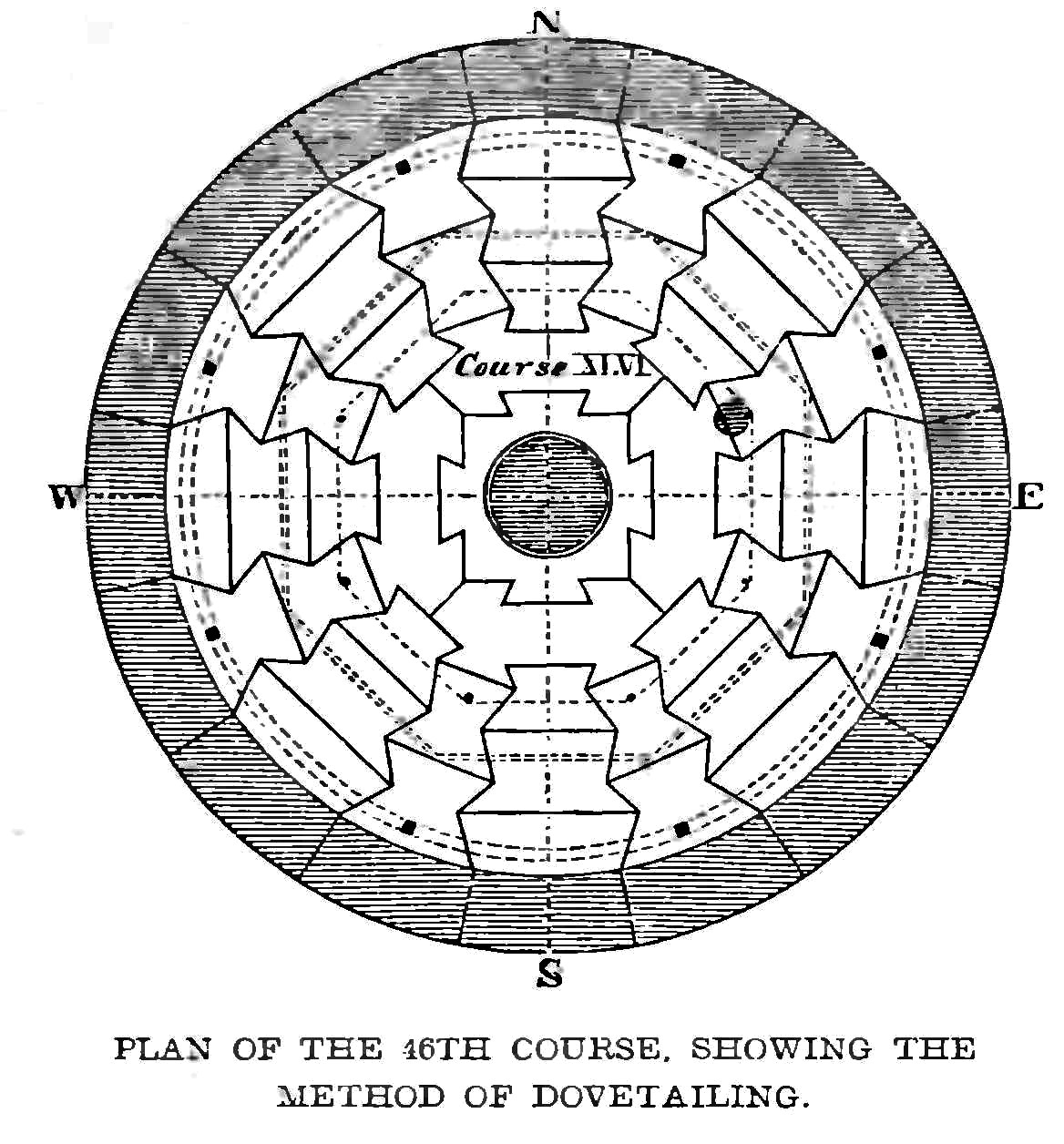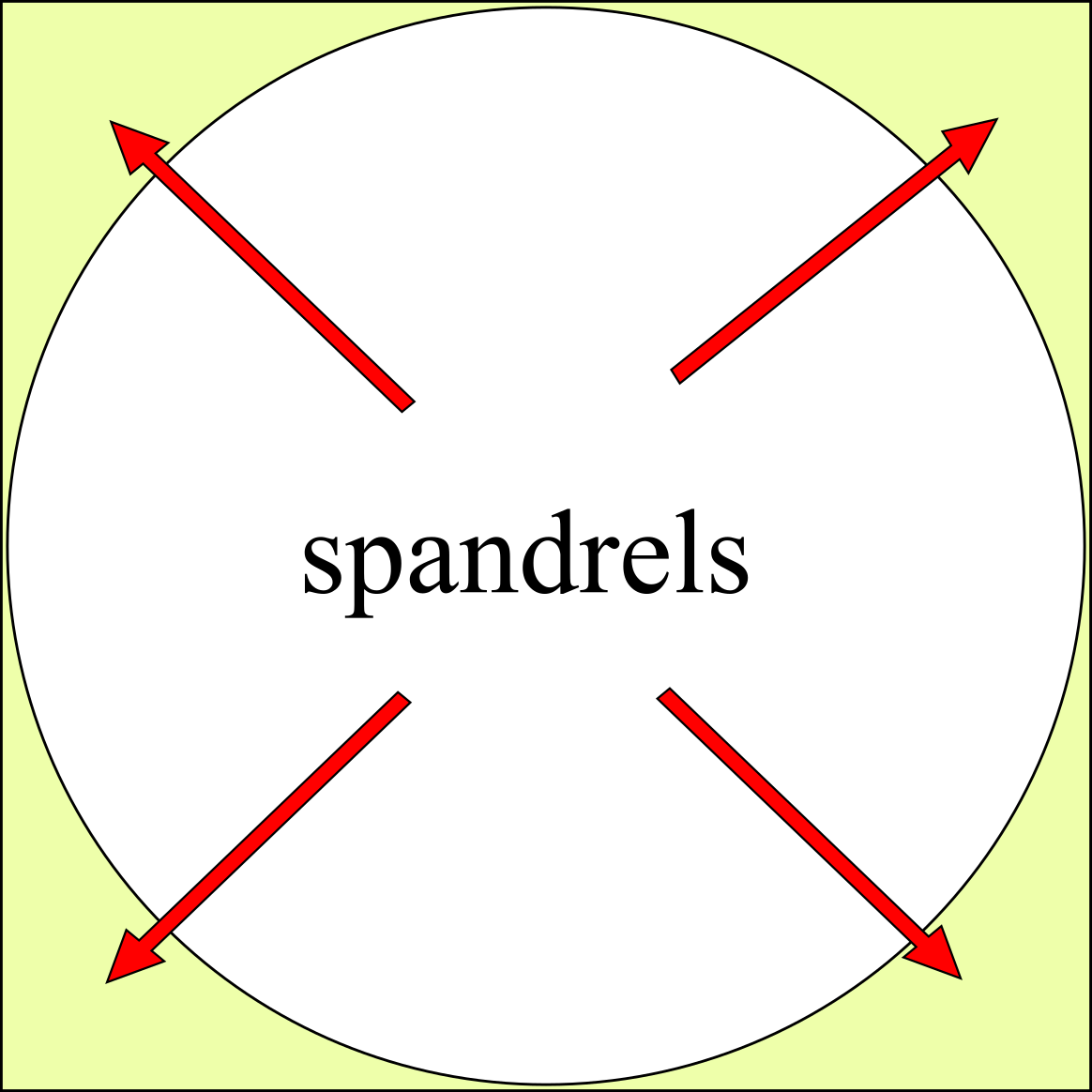|
Skerton Bridge
Skerton Bridge is a road bridge carrying the southbound lanes of the A6 road (England), A6 road over the River Lune in Lancaster, Lancashire, Lancaster, Lancashire, England. The bridge is recorded in the National Heritage List for England as a designated Grade II* Listed building#England and Wales, listed building and Scheduled Monument. History The history of a bridge at Skerton is somewhat amusingly related in Cross Fleury's 1891 publication ''Time-Honoured Lancaster'', which notes that, with the looming arrival of the Jacobitism, Jacobites in the first Rising of 1715, the people attempted to forestall a rapid occupation of the town by damaging the only link to the northern bank of the Lune (the Old Loyne Bridge), knocking the battlements off the sides of the existing bridge to its northern end. The Governors of the town had, in fact, planned to blow up the bridge but, upon being informed that the river was shallow enough to ford easily at numerous points, opted not to cau ... [...More Info...] [...Related Items...] OR: [Wikipedia] [Google] [Baidu] |
Lancaster, Lancashire
Lancaster (, ) is a city in Lancashire, England, and the main cultural hub, economic and commercial centre of City of Lancaster district. The city is on the River Lune, directly inland from Morecambe Bay. Lancaster is the county town, although Lancashire County Council has been based at County Hall, Preston, County Hall in Preston, Lancashire, Preston since its formation in 1889. The city's long history is marked by Lancaster Roman Fort, Lancaster Castle, Lancaster Priory, Lancaster Priory Church, Lancaster Cathedral and the Ashton Memorial. It is the seat of Lancaster University and has a campus of the University of Cumbria. It had a population of 52,234 in the 2011 census, compared to the district, which had a population of 138,375. The House of Lancaster was a branch of the List of English monarchs, English royal family. The Duchy of Lancaster still holds large estates on behalf of Charles III, who is the Duke of Lancaster. The Port of Lancaster and the 18th-century Lancas ... [...More Info...] [...Related Items...] OR: [Wikipedia] [Google] [Baidu] |
Ashlar
Ashlar () is a cut and dressed rock (geology), stone, worked using a chisel to achieve a specific form, typically rectangular in shape. The term can also refer to a structure built from such stones. Ashlar is the finest stone masonry unit, and is generally rectangular (cuboid). It was described by Vitruvius as ''opus isodomum'' or trapezoidal. Precisely cut "on all faces adjacent to those of other stones", ashlar is capable of requiring only very thin joints between blocks, and the visible face of the stone may be Quarry-faced stone, quarry-faced or feature a variety of treatments: tooled, smoothly polished or rendered with another material for decorative effect. One such decorative treatment consists of small grooves achieved by the application of a metal comb. Generally used only on softer stone ashlar, this decoration is known as "mason's drag". Ashlar is in contrast to rubble masonry, which employs irregularly shaped stones, sometimes minimally worked or selected for simi ... [...More Info...] [...Related Items...] OR: [Wikipedia] [Google] [Baidu] |
John Rennie The Elder
John Rennie (7 June 1761 – 4 October 1821) was a Scottish civil engineer who designed many bridges, canals, docks and warehouses, and a pioneer in the use of structural cast-iron. Early years John Rennie was born near Phantassie in Haddingtonshire (present day East Lothian). He was the youngest son of James Rennie, a farmer and brewer. He attended the parish school at Prestonkirk Parish Church, Prestonkirk. He showed an interest in machinery from an early age, and came to the attention of Andrew Meikle, a millwright and the inventor of the threshing machine, who lived on the Phantassie estate. At the age of twelve, Rennie started to work for Meikle, getting a grounding in practical mechanics. From 1775 to 1777, he attended high school in Dunbar. In 1779, with the support and approval of Meikle, he set up in business on his own account as a millwright. One of his first jobs was to construct a mill for his oldest brother, George Rennie (agriculturalist), George Rennie. From 1 ... [...More Info...] [...Related Items...] OR: [Wikipedia] [Google] [Baidu] |
Jean-Rodolphe Perronet
Jean-Rodolphe Perronet (27 October 1708 – 27 February 1794) was a French architect and structural engineer known for his many stone arch bridges. His best-known work is the Pont de la Concorde (Paris), Pont de la Concorde (1787). Early life Perronet was born in Suresnes, a suburb of Paris, the son of a Swiss Guards#Swiss Guards (Gardes Suisses), Swiss Guardsman. At age 17, he entered the architectural practice of Jean Beausire, Jean-Baptiste-Augustin Beausire, an engineer and "maître des bâtiments" to the city of Paris, as an apprentice. He was put in charge of the design and construction of Paris's grand sewer, embankment works, and the maintenance of the banlieue's roads. In 1735, he was named sous-ingénieur (under-engineer) to Alençon and in 1736 entered the Corps des ponts et chaussées. In 1737, he became sous-ingénieur, then engineer to the généralité of Alençon. Career In 1747, Perronet was named director of the Bureau des dessinateurs du Roi (Royal Office of ... [...More Info...] [...Related Items...] OR: [Wikipedia] [Google] [Baidu] |
Neuilly-sur-Seine
Neuilly-sur-Seine (; 'Neuilly-on-Seine'), also known simply as Neuilly, is an urban Communes of France, commune in the Hauts-de-Seine Departments of France, department just west of Paris in France. Immediately adjacent to the city, north of the Bois de Boulogne, the area is composed of mostly select residential neighbourhoods, as well as many corporate headquarters and a handful of foreign embassies. One of the most affluent areas of France, it is the wealthiest and most expensive suburb of Paris. Together with the 16th arrondissement of Paris, 16th and 7th arrondissement of Paris, the town of Neuilly-sur-Seine forms the most affluent residential area in France. , it is the commune with the fourth highest median per capita income (€52,570 per year) in France. History Originally, Pont de Neuilly was a small hamlet under the jurisdiction of Villiers, a larger settlement mentioned in medieval sources as early as 832 and now absorbed by the commune of Levallois-Perret. It was ... [...More Info...] [...Related Items...] OR: [Wikipedia] [Google] [Baidu] |
John Smeaton
John Smeaton (8 June 1724 – 28 October 1792) was an English civil engineer responsible for the design of bridges, canals, harbours and lighthouses. He was also a capable mechanical engineer and an eminent scholar, who introduced various scientific method, scientific methodologies into engineering.Morris, Andrew M.A. (2021). "English engineer John Smeaton's experimental method(s)". Studies in History and Philosophy of Science, 89, 283-294, url=https://doi.org/10.1016/j.shpsa.2021.07.004 Smeaton was the first self-proclaimed "civil engineer", and is often regarded as the "father of civil engineering".Denny, Mark (2007). "Ingenium: Five Machines That Changed the World". p. 34. JHU Press. He pioneered the use of hydraulic lime in concrete, using pebbles and powdered brick as aggregate. Smeaton was associated with the Lunar Society. Law and physics Smeaton was born in Austhorpe, Leeds, England. After studying at Leeds Grammar School he joined his father's law firm, but left t ... [...More Info...] [...Related Items...] OR: [Wikipedia] [Google] [Baidu] |
Coldstream Bridge
Coldstream Bridge, linking Coldstream, Scottish Borders with Cornhill-on-Tweed, Northumberland, is an 18th-century Category A/Grade II* listed bridge between England and Scotland, across the River Tweed. The bridge carries the A697 road across the Tweed. The bridge is one of three bridges spanning the River Tweed section of the Anglo-Scottish border (the others being the Union Chain Bridge and the Ladykirk and Norham Bridge), and the oldest of the three. History The architect for the bridge was John Smeaton (responsible for the third Eddystone Lighthouse), working for the Tweed Bridges Trust. Construction lasted from July 1763 to 28 October 1766, when it opened to traffic. The cost of the bridge was £6,000, with government grants available for the project and the shortfall covered by a mixture of local subscription and loans from Edinburgh's banks, which were to be paid back by the tolling system. There was controversy when the project's resident engineer, Robert Reid ... [...More Info...] [...Related Items...] OR: [Wikipedia] [Google] [Baidu] |
Abutment
An abutment is the substructure at the ends of a bridge span or dam supporting its superstructure. Single-span bridges have abutments at each end that provide vertical and lateral support for the span, as well as acting as retaining walls to resist lateral movement of the earthen fill of the bridge approach. Multi-span bridges require piers to support ends of spans unsupported by abutments. Dam abutments are generally the sides of a valley or gorge, but may be artificial in order to support arch dams such as Kurobe Dam in Japan. The civil engineering term may also refer to the structure supporting one side of an arch, or masonry used to resist the lateral forces of a vault.Pevsner, N. (1970) ''Cornwall''; 2nd ed. Harmondsworth: Penguin; p. 245 The impost or abacus An abacus ( abaci or abacuses), also called a counting frame, is a hand-operated calculating tool which was used from ancient times in the ancient Near East, Europe, China, and Russia, until the adoptio ... [...More Info...] [...Related Items...] OR: [Wikipedia] [Google] [Baidu] |
Spandrel
A spandrel is a roughly triangular space, usually found in pairs, between the top of an arch and a rectangular frame, between the tops of two adjacent arches, or one of the four spaces between a circle within a square. They are frequently filled with decorative elements. Meaning There are four or five accepted and cognate meanings of the term ''spandrel'' in architecture, architectural and art history, mostly relating to the space between a curved figure and a rectangular boundary – such as the space between the curve of an arch and a rectilinear bounding moulding, or the wallspace bounded by adjacent arches in an arcade and the stringcourse or moulding above them, or the space between the central medallion of a carpet and its rectangular corners, or the space between the circular face of a clock and the corners of the square revealed by its hood. Also included is the space under a flight of stairs, if it is not occupied by another flight of stairs. In a building with more ... [...More Info...] [...Related Items...] OR: [Wikipedia] [Google] [Baidu] |
Oxford University Press
Oxford University Press (OUP) is the publishing house of the University of Oxford. It is the largest university press in the world. Its first book was printed in Oxford in 1478, with the Press officially granted the legal right to print books by decree in 1586. It is the second-oldest university press after Cambridge University Press, which was founded in 1534. It is a department of the University of Oxford. It is governed by a group of 15 academics, the Delegates of the Press, appointed by the Vice Chancellor, vice-chancellor of the University of Oxford. The Delegates of the Press are led by the Secretary to the Delegates, who serves as OUP's chief executive and as its major representative on other university bodies. Oxford University Press has had a similar governance structure since the 17th century. The press is located on Walton Street, Oxford, Walton Street, Oxford, opposite Somerville College, Oxford, Somerville College, in the inner suburb of Jericho, Oxford, Jericho. ... [...More Info...] [...Related Items...] OR: [Wikipedia] [Google] [Baidu] |
Oxford Dictionary Of National Biography
The ''Dictionary of National Biography'' (''DNB'') is a standard work of reference on notable figures from History of the British Isles, British history, published since 1885. The updated ''Oxford Dictionary of National Biography'' (''ODNB'') was published on 23 September 2004 in 60 volumes and online, with 50,113 biographical articles covering 54,922 lives. First series Hoping to emulate national biography, biographical collections published elsewhere in Europe, such as the (1875), in 1882 the publisher George Murray Smith, George Smith (1824–1901), of Smith, Elder & Co., planned a universal dictionary that would include biographical entries on individuals from world history. He approached Leslie Stephen, then editor of the ''Cornhill Magazine'', owned by Smith, to become the editor. Stephen persuaded Smith that the work should focus only on subjects from the United Kingdom and its present and former colonies. An early working title was the ''Biographia Britannica'', the na ... [...More Info...] [...Related Items...] OR: [Wikipedia] [Google] [Baidu] |
Parapet
A parapet is a barrier that is an upward extension of a wall at the edge of a roof, terrace, balcony, walkway or other structure. The word comes ultimately from the Italian ''parapetto'' (''parare'' 'to cover/defend' and ''petto'' 'chest/breast'). Where extending above a roof, a parapet may simply be the portion of an exterior wall that continues above the edge line of the roof surface, or may be a continuation of a vertical feature beneath the roof such as a fire wall or party wall. Parapets were originally used to defend buildings from military attack, but today they are primarily used as guard rails, to conceal rooftop equipment, reduce wind loads on the roof, and to prevent the spread of fires. Parapet types Parapets may be plain, embattled, perforated or panelled, which are not mutually exclusive terms. *Plain parapets are upward extensions of the wall, sometimes with a coping at the top and corbel below. *Embattled parapets may be panelled, but are pierced, if not ... [...More Info...] [...Related Items...] OR: [Wikipedia] [Google] [Baidu] |







